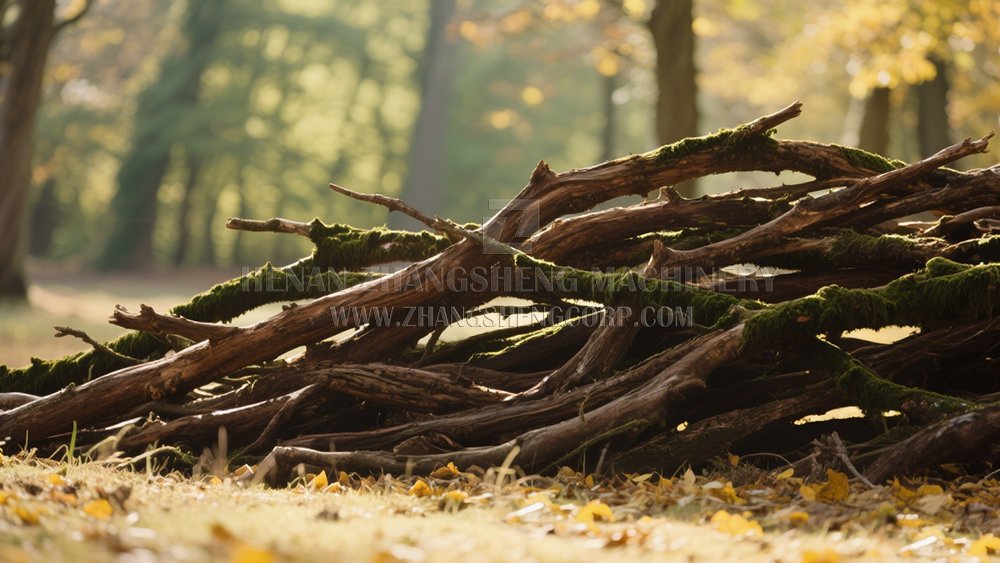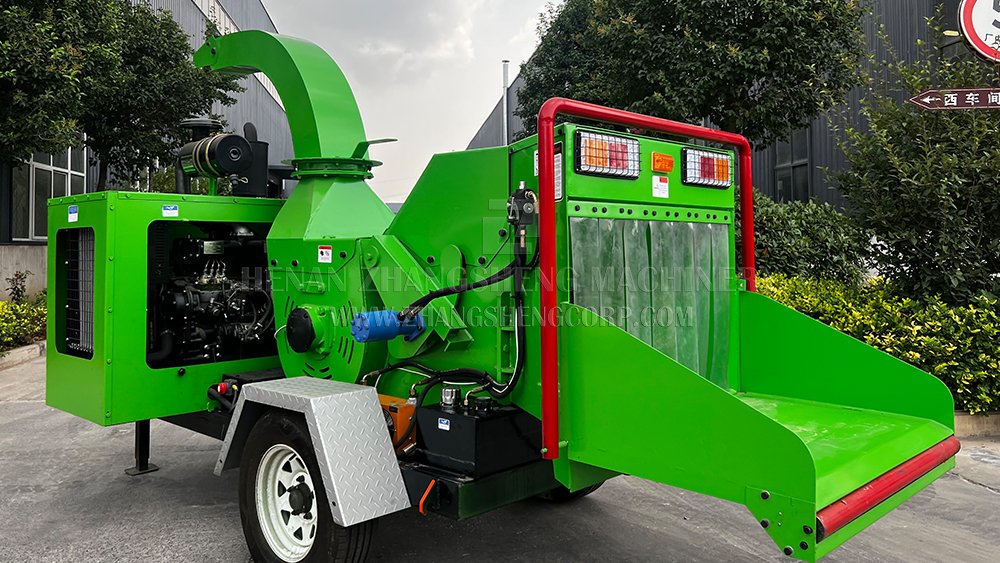What to Know About Brush Chipper Drums, Discs & Knives?
When delving into the world of brush chippers, understanding the core components that do the actual work—the drums, discs, and knives—is essential. These elements dictate the machine's performance, chip quality, and suitability for different materials.
Brush chipper drums, discs, and knives are the primary cutting mechanisms, each designed for specific applications. Drum chippers excel at processing varied woody materials into consistently sized chips, while disc chippers are known for producing finely cut chips quickly. The knives on both determine cutting efficiency and chip quality.
As a manufacturer who has spent over two decades developing and refining wood processing equipment, I can tell you that the design of the chipper’s cutting mechanism is at the heart of its efficiency and versatility. It's not just about raw power; it's about how that power is applied through precision engineering.
Different tasks require different tools, and brush chippers are no exception. Knowing the distinctions between these vital components will help you make an informed decision and ensure your equipment aligns perfectly with your operational needs.

What is the difference between a disk chipper and a drum chipper?
When exploring brush chippers, you'll frequently encounter two main types: disc chippers and drum chippers. But what truly sets them apart, and how does this affect their performance and output?
Disc chippers use a rotating steel disc with knives mounted on its face, cutting wood at an angle, while drum chippers utilize a rotating cylindrical drum with knives embedded along its surface, shearing wood against an anvil. The primary differences lie in their cutting action, chip quality, and material handling capabilities.
Disc Chipper: Precision and Speed
Imagine a large, heavy steel disc spinning at high speed. This disc has several sharp knives bolted onto its face, positioned at an angle. As wood enters the chipper, these knives slice across the material, much like sharpening a pencil but on a much larger scale. This cutting action results in uniform, high-quality chips, often suitable for pulp and paper production or as consistent biomass fuel.
**Key Features of Disc Chippers:**
Cutting Mechanism: A heavy steel disc with knives mounted on its face.
Chip Quality: Tends to produce more uniform and consistent chips due to the clean slicing action. This makes them ideal for pulp production, landscaping mulch, or high-quality biomass fuel.
Feed System: Often relies on gravity or horizontal hydraulic feed rollers that pull material into the disc.
Material Suitability: Excellent for processing straighter, cleaner wood like branches and small logs. They are generally less forgiving with crooked or heavily branched material.
Maintenance: Knife changes can be quick as they are typically located on the outside of the disc.
Disc chippers are often favored in operations where chip consistency is critical. Their design allows for efficient processing of relatively clean, straight woody material into a tidy, uniform product.
Drum Chipper: Versatility and Robustness
Now, picture a heavy steel cylinder, or drum, with knives embedded horizontally along its perimeter. As this drum rotates, it pulls material in and shears it against a fixed anvil, effectively tearing and cutting the wood into chips. This action is more aggressive than a disc chipper's slicing motion, making drum chippers exceptionally robust.
**Key Features of Drum Chippers:**
Cutting Mechanism: A rotating cylindrical drum with knives or cutter blocks.
Chip Quality: Produces a less uniform chip compared to disc chippers, often with a mix of sizes and some stringy material. However, they can produce very usable biomass chips. We at Zhangsheng have designed our drum chippers to produce more consistent chips by optimizing drum and knife configurations.
Feed System: Typically features powerful hydraulic feed rollers to aggressively pull in material. This makes them highly effective for handling large, irregular, or difficult materials.
Material Suitability: Ideal for a wider range of materials, including larger logs, brush with limbs, and even some mixed wood waste. They are less prone to jamming with awkward materials.
Maintenance: Knife changes can be more involved due to their positioning within the drum. However, their robust design often means less frequent major overhauls.
Drum chippers are the workhorses in many forestry and recycling operations. Their ability to handle a diverse range of woody biomass, from large logs to tangled brush, makes them incredibly versatile. Our drum chippers are specifically engineered for high throughput and durability, making them suitable for demanding applications like biomass energy production or large-scale land clearing.

What does a brush chipper do?
A brush chipper is a powerful piece of equipment designed for one primary purpose: to reduce bulky woody material into smaller, more manageable pieces known as wood chips. But what are the typical applications and benefits of this process?
A brush chipper processes tree branches, logs, and other woody debris by shredding them into smaller wood chips. This serves to reduce bulky waste volume, create useful mulch or biomass fuel, and make disposal or transportation of organic materials much more efficient.
Applications of Brush Chippers
Brush chippers are indispensable tools across a variety of industries and applications. Here's a closer look at where they make a significant impact:
Forestry and Logging: In forestry operations, brush chippers are used to clear logging sites of unusable branches, tops, and small trees, reducing fire hazards and preparing the land for replanting. Our horizontal grinders, for example, can also process larger forest residuals, turning them into valuable biomass.
Land Clearing and Site Preparation: For construction, development, or agricultural expansion, chippers efficiently remove trees and brush, turning them into chips that can be either used on-site for erosion control or hauled away for other purposes.
Tree Care and Landscaping: Arborists and landscapers use chippers daily to manage tree pruning, storm debris, and tree removals. Chipping on-site reduces transportation costs and turns waste into valuable mulch for landscapes.
Biomass Energy Production: Wood chips are a renewable energy source. Chippers produce consistent chip sizes suitable for biomass boilers, gasification plants, and pellet production facilities. Zhangsheng's range of chippers and grinders are widely used to prepare feedstock for biomass power plants globally.
Waste Management and Recycling: Municipalities and private recycling centers use larger industrial chippers to process yard waste, urban wood waste from parks, and even disposed wooden pallets or crates, diverting them from landfills.
Fire Hazard Reduction: In fire-prone areas, chipping overgrown brush and low-lying vegetation significantly reduces the fuel load, making communities safer.
The versatility of brush chippers makes them essential for anyone involved in managing woody biomass efficiently and sustainably.
Benefits of Using a Brush Chipper
The advantages of using a brush chipper extend beyond simply reducing waste volume. They offer significant environmental, economic, and operational benefits:
Volume Reduction: This is arguably the most immediate benefit. Chipping drastically reduces the volume of woody debris, making it easier and cheaper to transport and dispose of. A large pile of branches can be reduced to a fraction of its original size in chip form.
Cost Savings: By reducing volume, transportation costs (fewer trips, smaller trucks) are significantly lowered. Additionally, if the chips are repurposed (e.g., as mulch or fuel), disposal fees can be eliminated entirely, or even generate revenue.
Environmental Benefits:
Resource Recycling: Instead of burning or landfilling woody waste, chipping turns it into a valuable resource.
Soil Health: Wood chips can be used as organic mulch, which conserves soil moisture, suppresses weeds, regulates soil temperature, and enriches the soil as they decompose.
Reduced Carbon Footprint: Using wood chips as biomass fuel provides a renewable alternative to fossil fuels, reducing greenhouse gas emissions. Avoided burning of brush also means less localized air pollution.
Site Safety and Cleanliness: Chipping removes trip hazards and fire risks associated with piles of brush, leading to a safer and cleaner work environment.
Versatility of End Product: The resulting wood chips can be used for a variety of purposes including:
Mulch: For landscaping, gardens, and erosion control.
Biomass Fuel: For heating, electricity generation, and pellet production.
Compost Additive: To balance nitrogen-rich green waste in composting operations.
Animal Bedding: Certain types of chips can be used for livestock or poultry bedding.
Investing in a quality brush chipper means gaining a powerful tool for efficient waste management, resource optimization, and overall operational improvement.
Conclusion
Understanding the differences between drum and disc chippers, along with their knife mechanisms, is key to selecting the right brush chipper for your specific needs, maximizing efficiency and chip quality.


